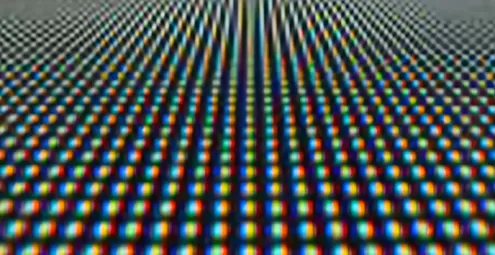Definition:
Refresh rate refers to how many times per second an LED display updates its image, measured in hertz (Hz). For example, a 60Hz refresh rate means the screen redraws the image 60 times per second.
Why It Matters
1. Motion Smoothness:
- Higher refresh rates (e.g., 1920Hz, 3840Hz) reduce motion blur and stutter, critical for fast-moving content (sports, gaming, action films).
- Lower refresh rates (e.g., 60Hz–120Hz) may cause visible flickering, especially under camera recording.
2. Camera Compatibility:
- Displays with low refresh rates (e.g., 60Hz) often clash with camera shutter speeds, creating distracting scan lines or flicker in broadcasts.
- High refresh rates (≥1920Hz) eliminate this issue, making them ideal for live events, studios, and film sets.
3. Visual Comfort:
- Higher rates reduce eye strain during prolonged viewing, though human perception typically plateaus around 60–75Hz.
Key Technical Insights
- Typical Values:
- Standard Displays: 60Hz–240Hz (common for basic indoor/outdoor screens).
- High-End Displays: 1920Hz–3840Hz (used in premium rental stages, broadcast studios).
- Frame Rate vs. Refresh Rate:
- Frame Rate: Number of frames per second (FPS) in content (e.g., 24FPS for movies, 60FPS for gaming).
- Refresh Rate: How often the display updates to show these frames. A mismatch can cause tearing (use adaptive sync technologies like FreeSync to resolve).
Applications by Refresh Rate
|
Refresh Rate |
Use Case |
Example |
|
60Hz–120Hz |
Static content, basic signage |
Retail ads, airport info screens |
|
240Hz–960Hz |
Dynamic indoor/outdoor displays |
Sports venues, concerts |
|
1920Hz+ |
High-speed content, camera-facing setups |
Broadcast studios, esports arenas |
Trade-offs
- Power Consumption: Higher refresh rates demand more power, impacting energy costs.
- Cost: Advanced driver ICs and processing hardware for ultra-high refresh rates increase display prices.
- Content Requirements: High refresh rates only benefit content with matching frame rates (e.g., 120Hz display + 120FPS video).
Comparison to Other Technologies
- LCD/OLED: Most consumer TVs cap at 120Hz–240Hz, while LED walls can exceed 3840Hz.
- MicroLED: Offers superior refresh rates (up to 10,000Hz in labs) due to direct-driven pixels, ideal for AR/VR and military applications.
Conclusion
A higher refresh rate ensures smoother visuals and camera compatibility but comes with trade-offs in cost and power. Choose based on your use case:
- 60Hz–120Hz: Budget-friendly for static content.
- 1920Hz+: Essential for live broadcasts, high-speed content, or critical viewing environments.










